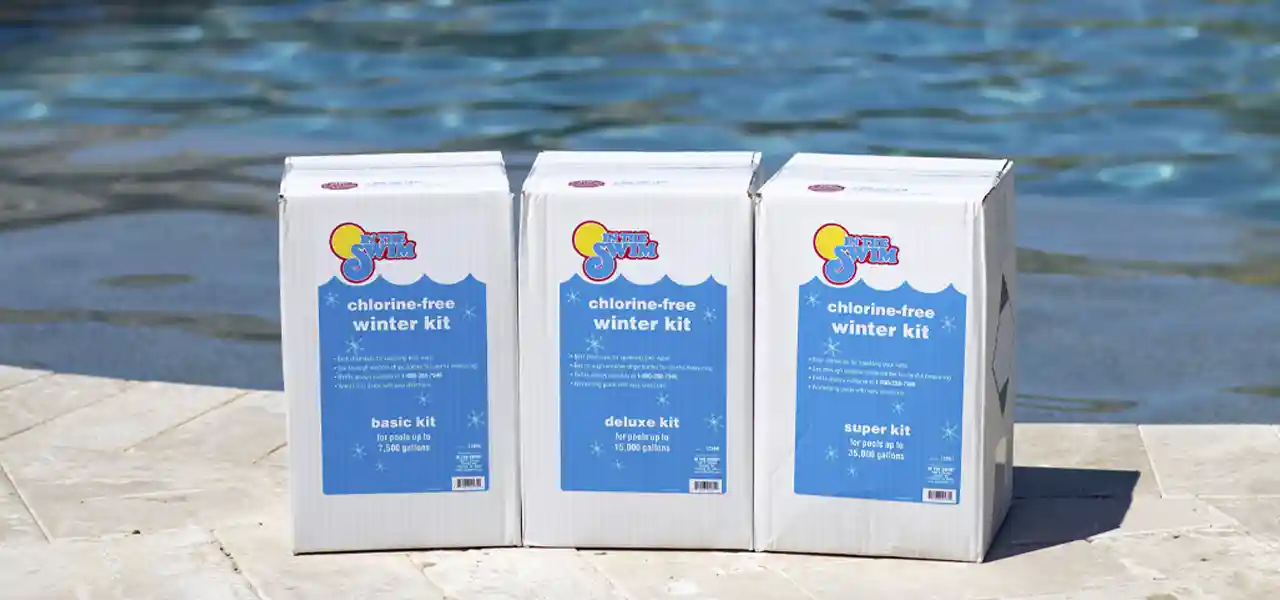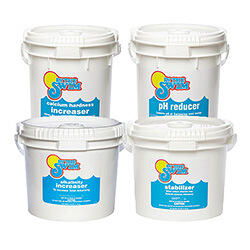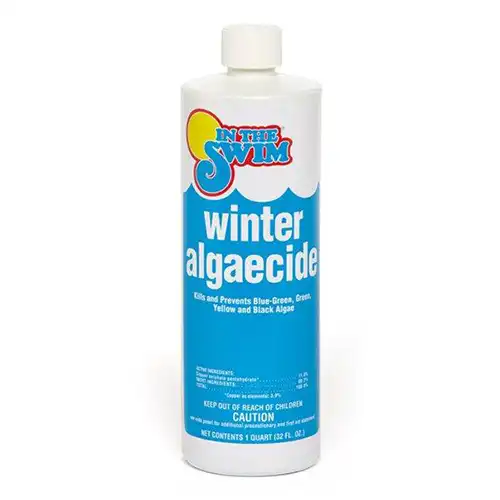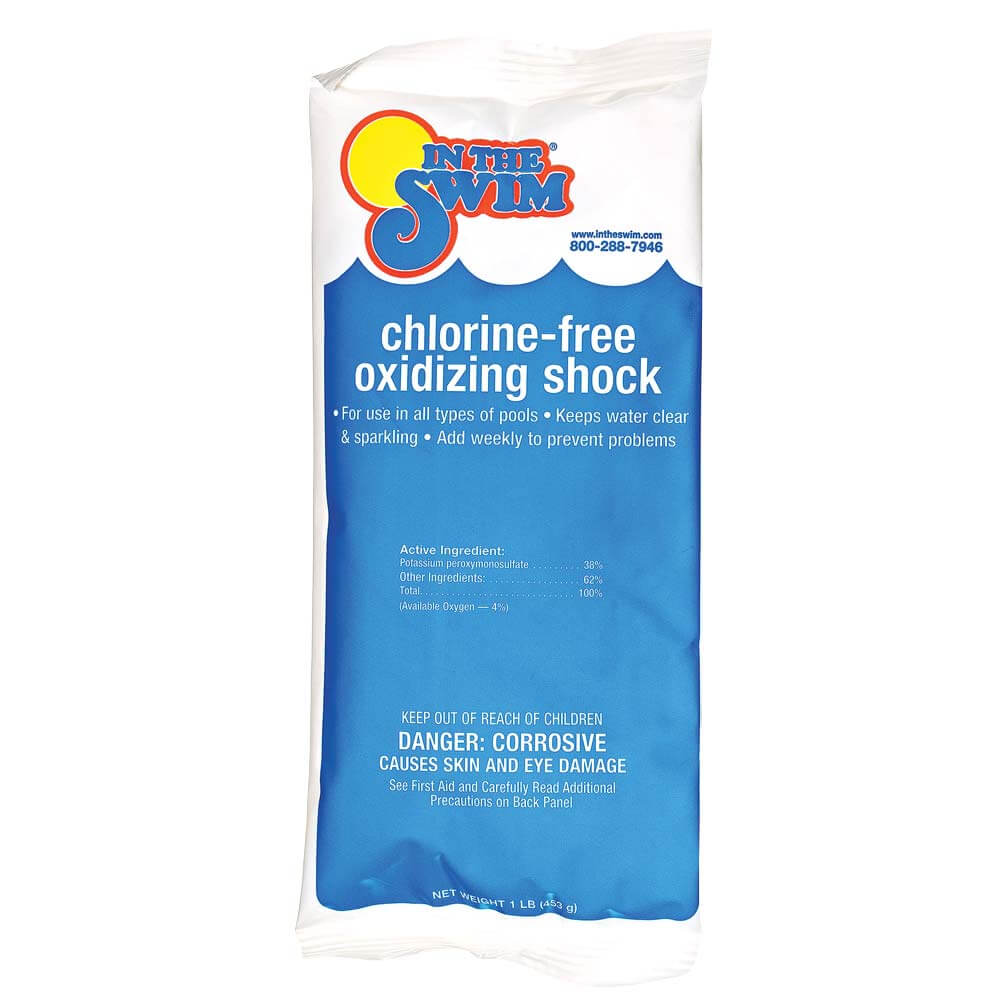FREE Standard Shipping On All Orders $100 or More!*

Pool Closing Chemicals: Best Order to Add?
When closing a pool for fall, what is the best order to add winter pool chemicals? Is there such a thing, and does it even matter? Yes, and yes! If you add winterizing chemicals in the wrong order, you can end up deactivating or degrading them!
Here are some of the key winter pool chemicals you will use at closing time:
Water Balancers
3-Days Before Closing: Test and balance your pool's pH, Total Alkalinity, and Calcium Hardness levels first, several days to a week before you plan on closing the pool. New plaster or pebble surfaces will continue to release carbonates, which will raise pH and Total Alkalinity through winter.
Enzymes / Phosphate Removers
2-Days Before: For pools that have a history of opening with green algae, using a phosphate remover or pool enzymes can be a real problem solver. We recommend Natural Chemistry Pool Magic Spring and Fall, a blend of phosphate remover, algaecide and clarifier to purify your water. Use Spring and Fall for year-round protection. This product needs to circulate for a day or two before lowering the water level.
Winter Stain-Away
1-Day Before: Our winter kits come with our Winter Stain Away, a long lasting version of our stain & scale preventer, or sequestering agent. It works best when it has at least 8-hours to circulate and make molecular bonds with metals and minerals in the pool water. It also needs to do this before (or days after) shocking the pool, which can disrupt or weaken the bonds.
Winter Algaecide
Add the algaecide after you have lowered the water level in the pool, and just before putting on the pool cover. In this way you are not wasting any algaecide, and because it will mix itself without the pump circulating the chemical. Our Winterizer Algaecide is formulated to go dormant at water temps of 50°F or less, but for long and warm fall or spring seasons, more algaecide may be needed mid-spring.
Winter Floater
Our Closing Kits employ a non-chlorine floating sanitizer cartridge, aka the Winter Floater, which continuously provides low-level sanitation throughout the winter to keep your water fresh and clean. Our unique non-chlorine floater protects against stains or damage to pool surfaces. You cannot buy our winter floater separately however, it's only available in our Winter Kits.
As an alternative, you can use a jumbo floating chlorinator with ten 3" tablets, and close the baffle vents all the way, for slow-release. Tie off the floater across the deep end of the pool, to keep it from free-floating, and possibly getting stuck on steps or tipping over, which could cause stains or surface damage.
Non-Chlorine Shock
Our closing kits also employ chlorine-free shock. Why? Because it won't destroy the other chemicals used in the pool closing process, and because we are not trying to kill spring algae growth, but trying to prevent algae growth during winter. Non-chlorine shock fits the bill perfectly, oxidizing and sanitizing the water, while not disrupting the algaecide and stain fighting chemicals.
If you use chlorine shock to close your pool, be sure to shock the pool 1-2 days before closing day, so that the chlorine level is reduced when the other chemicals are added. Second, if needed, you can super-chlorinate the night before closing, testing the next day to be sure chlorine is below 5 ppm, before adding Stain Away and algaecide. If not, add them next weekend, under the cover.
Winter Sorb
The Winter Sorb is an oil absorbing sponge that is included with our winter kits. You can also use Scum Balls, which are a similar product. These float around the pool and attract oils and greasy gunk floating on the water's surface. Prevents 'bath tub ring' on plaster pools by absorbing the surface scum, pollen, dust and pollutants. Tennis balls can also be used, although not as effective as sponges treated to attract and absorb oils.
Key Takeaways
First, don't add everything at once, or add everything except the shock - which should be added separately, either before or after, by at least 8 hours.
Second, add phosphate removers, enzymes or stain & scale chemicals before you lower the water level, so you can circulate the chemicals for at least 8 hours.
Third, balanced water chemistry is important. If your pH and alkalinity levels have been erratic this season, take care to adjust beforehand, and check levels during winter.


